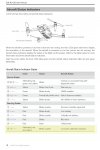Coming from a Mavic Pro and after one and an half years without a drone, waiting for (A) a suitable DJI model (B) Full support by Litchi (as I need WP functionality) and (C) full clarification regarding EC regulations, from 2023 onward, I finally got an Air 2S. 
Being familiar with the requirement to calibrate things on a new drone, I started with the RC-N1 calibration, proceed with the IMU one and will perform the compass calibration in an open field, this afternoon.
Although the system reported the IMU calibration as a successful one, I noticed that, in the required steps of having the aircraft laying on its side, it did no lay at a perpendicular angle to the flat surface it was laying on, due to its own design. It lay slightly slanted.
Shouldn't it be fully perpendicular to the resting surface during those steps?
If so, should I repeat the IMU calibration?
...and, if you feel it is warranted, how did you ensure your a/c was laying perpedicular to the surface during the "sides" steps phases?
Thank you for any input.
WK
Being familiar with the requirement to calibrate things on a new drone, I started with the RC-N1 calibration, proceed with the IMU one and will perform the compass calibration in an open field, this afternoon.
Although the system reported the IMU calibration as a successful one, I noticed that, in the required steps of having the aircraft laying on its side, it did no lay at a perpendicular angle to the flat surface it was laying on, due to its own design. It lay slightly slanted.
Shouldn't it be fully perpendicular to the resting surface during those steps?
If so, should I repeat the IMU calibration?
...and, if you feel it is warranted, how did you ensure your a/c was laying perpedicular to the surface during the "sides" steps phases?
Thank you for any input.
WK










